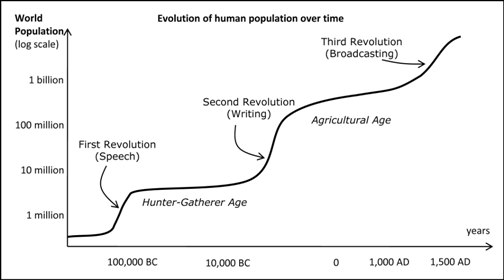A great example of what developing countries can bring to the world is explained in the TED talk by Shahi Tharoor on India’s soft power. This great talk is a great example of how developing countries – India in this instance – could bring a different view and approach to the world.
It is also a great example to meditate on the power of the new cheap long distance interaction in the daily life of people, even in the poorest countries.
The interesting paradox is that Shashi Tharoor was finally dismissed from his political position because he was a bit too transparent in his usage of Twitter. Some institutions still have it hard to face modern realities – and Indian bureaucracy is certainly a great example of institutions that will fight modern technology to death.
Nevertheless the Fourth Revolution will prevail. This is the direction of history. Whether the road will be smooth or bumpy is another story. We all can decide on that.
Take the 20 minutes or so to listen to that enlightening talk. It is worth it. It might change your view of the world.






